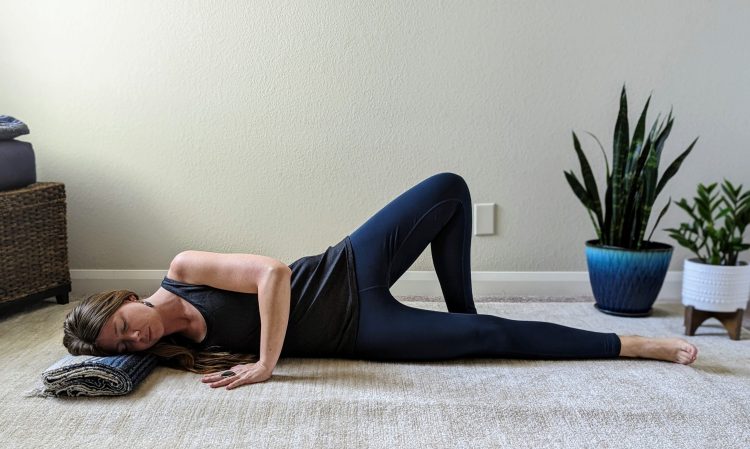Over the last decade, “trauma-informed yoga” has emerged as a widely discussed term across yoga studios, therapy offices, and wellness retreats. It promises something more than a stretch or sweat—it claims to offer a healing modality for survivors of trauma, an embodied practice that bypasses cognitive defenses and allows the body to feel safe again. But as with many terms in the wellness industry, skepticism grows alongside popularity. Is trauma-informed yoga a truly distinct discipline with clinical value, or is it just a marketing rebrand of familiar postures wrapped in therapeutic jargon?
To answer this, we must look beyond Instagram captions and soothing studio playlists. Trauma-informed yoga differs in methodology, instruction, and intention. Unlike traditional yoga, it is less about alignment perfection and more about agency. It doesn’t aim to transcend the body but to re-inhabit it gently, especially for those whose nervous systems have been hijacked by chronic stress or post-traumatic stress disorder (PTSD). And increasingly, clinical studies and psychotherapy research are backing its effectiveness—not as a cure-all, but as a valuable adjunct to mental health treatment.
Certified Training Programs and Instructor Credentials
A key marker of authenticity in trauma-informed yoga is the training behind the teacher. Unlike general yoga certification—which typically involves 200 hours of instruction on asanas, anatomy, and yogic philosophy—trauma-informed programs focus specifically on nervous system regulation, psychological safety, and trauma-sensitive language.
Leading programs such as the Trauma Center Trauma-Sensitive Yoga (TCTSY), developed by the Justice Resource Institute and affiliated with Dr. Bessel van der Kolk’s seminal work The Body Keeps the Score, require instructors to complete intensive certification. This includes modules on polyvagal theory, somatic experiencing, and the neurobiology of trauma. Teachers are trained not only to guide movement but to understand dissociation, freeze responses, and the importance of non-coercive instruction.
Other notable programs include Yoga for 12-Step Recovery (Y12SR), Prison Yoga Project, and YogaFit’s Mental Health and Trauma-Informed Tracks. What these programs share is an emphasis on choice, safety, and empowerment. Rather than using command-based cues (“do this, now that”), instructors invite students to explore movements (“if you’d like, you could try…”), always with permission to pause, opt out, or stay still.
This fundamental shift in tone matters. Trauma survivors often experience a loss of control in their bodies. Trauma-informed yoga aims to restore agency. Certification ensures that instructors are not inadvertently re-traumatizing participants through hands-on adjustments, triggering language, or high-pressure sequencing.
Modifications for PTSD Survivors
In traditional yoga, structure, sequence, and physical precision are often prioritized. Trauma-informed yoga, however, intentionally avoids certain common elements to create a more emotionally safe space.
One of the most obvious changes is the class structure. Trauma-informed sessions often avoid mirrors, dim lighting, or tightly packed rooms. There may be no music or incense—common triggers for those with sensory sensitivities. Classes usually begin with grounding techniques rather than energetic flows, and participants are never required to close their eyes if that induces anxiety.
Physical adjustments are either minimized or eliminated. Where touch is used (rarely), it is always consensual and typically offered via props or verbal support. Teachers position themselves where they can always be seen, avoiding sudden movements from behind or walking through students’ mats—practices that might startle or hyperactivate a trauma-primed nervous system.
The postures themselves are often modified. Instead of focusing on extreme backbends or inversions, trauma-informed yoga emphasizes stability and containment. Poses like child’s pose, legs-up-the-wall, or supported bridge are favored for their calming effect on the vagus nerve. Breathwork, too, is approached carefully. For many trauma survivors, deep breathing can feel overwhelming or even triggering. Instructors might simply invite awareness of breath, rather than enforce a controlled pranayama.
A hallmark of trauma-informed yoga is that there is no “correct” way to do the practice. The emphasis is on presence, not performance. Students are reminded that doing less, or even lying still for the full class, is a valid and powerful practice.
Studies on Yoga vs. Talk Therapy
Beyond anecdotal success stories, the scientific evidence supporting trauma-informed yoga is growing steadily. Several studies now confirm what many survivors and clinicians have long suspected: yoga can reach places that words alone cannot.
A groundbreaking 2014 randomized controlled trial published in the Journal of Clinical Psychiatry found that trauma-sensitive yoga significantly reduced PTSD symptoms in women with chronic treatment-resistant PTSD, outperforming a control group on standard talk therapy. Participants who practiced yoga once a week for ten weeks experienced marked reductions in anxiety, depression, and intrusive memories.
Another study from the University of Toronto followed women with complex trauma who engaged in an 8-week trauma-informed yoga program. Results showed improvements in emotional regulation, body awareness, and a decreased sense of helplessness. Importantly, many participants reported that the embodied nature of yoga helped them “feel again” after years of dissociation—a common defense mechanism in PTSD.
Even the U.S. Department of Veterans Affairs has acknowledged yoga as an “evidence-based complementary therapy,” and some VA hospitals now offer trauma-informed classes for veterans alongside cognitive behavioral therapy (CBT) and medication.
But yoga is not a standalone therapy. Experts caution that it works best as part of a multimodal treatment plan. Talk therapy remains critical for narrative integration, especially when past trauma involves complex interpersonal dynamics. However, yoga offers a somatic counterbalance—where cognitive therapies reach the mind, yoga reconnects it to the body.

The Neuroscience of Safety
Why does trauma-informed yoga work? Much of the answer lies in neurobiology. Trauma, particularly when it is chronic or stems from early life, reshapes the brain. The amygdala becomes hyperactive, the hippocampus shrinks, and the prefrontal cortex—the seat of reason and language—is suppressed. This is why trauma survivors may know, intellectually, that they are safe but still feel on edge or numb.
Yoga, by calming the nervous system and reactivating sensory pathways, can help “reset” these circuits. Slow, mindful movement paired with breath cues the parasympathetic nervous system—the body’s rest-and-digest mode. Over time, this builds neuroplasticity: the ability of the brain to form new, healthier connections. It’s a bottom-up approach, in contrast to traditional top-down therapies like CBT.
Furthermore, trauma-informed yoga cultivates interoception—the capacity to sense internal bodily states. This skill, which is often impaired in trauma survivors, is critical for emotional regulation. As one practitioner put it, “I couldn’t talk about my trauma, but I could feel my feet on the mat. That was enough to start healing.”
Conclusion: Beyond the Buzzword
So, is trauma-informed yoga just a buzzword? Clearly not. When taught by properly trained instructors, grounded in trauma science, and applied with care, it offers a unique and vital space for healing—especially for those whose trauma has made the body feel like a battleground.
However, the term is at risk of being diluted. As yoga becomes more commercialized, many classes claim to be “trauma-informed” without delivering on the core principles. True trauma-informed yoga is not about soft lighting or gentle flows—it is about reestablishing sovereignty in the body, offering choice without coercion, and honoring the complex ways trauma manifests in movement and stillness alike.
The future lies in deeper integration with mental health services, increased access in marginalized communities, and continued research on long-term outcomes. If done right, trauma-informed yoga will not remain a niche trend. It will become a standard practice in holistic trauma recovery.










































